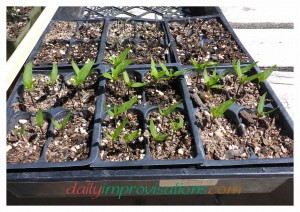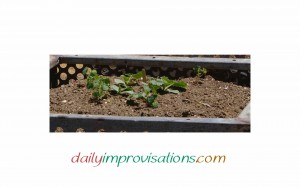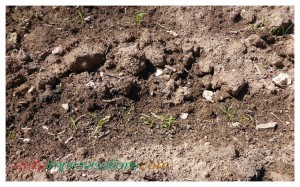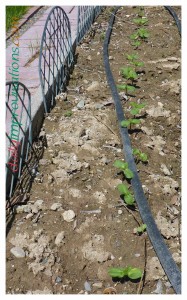
June can be intense in the garden in southwest Idaho. Even though there has been time to plant some cool weather crops earlier in spring, the end of May and the beginning of June is the time to plant all of the warm weather crops. Although it can vary some with exact variety, there are many warm weather crops that need every possible minute of the warm months to reach maturity.
That is why it is good to gradually use the cooler months, when you have been itching to plant things, to get garden beds ready for the final push in late spring planting. While from March to May, it makes sense to weed and plant as you go along, in June, it really helps if the garden beds are ready ahead of time for some major planting time, if your garden is of any significant size. However, that doesn’t mean they have to be perfect, it just means the exact areas where you need to plant the seeds should be reasonably bare. You can try to get back to more thorough weeding later. (click on any photo to enlarge)

Warm weather crops, in Idaho terms, are those that:
- Won’t grow in cooler temperature
- Will suffer significantly or die from any frost
- Thrive in dry heat
The things that I plant in this category are:
- Green beans
- Dry or Shell beans
- Squash, winter and summer
- Corn
- Cucumbers
- Melons
- Tomatoes (as plants started in my greenhouse)
- Peppers, sweet or hot (as plants started in my greenhouse)
- Basil
A little bit of planting strategy can help relieve some of the planting schedule stress and lead to better overall garden results.
- Make a list or stack of little flashcards with the name and variety of each vegetable on it.
- Find where it says on the seed packet, or in your notes if you save your own seed, how many days until harvest.
- Arrange the planting schedule to get those things planted first which will take the longest to produce. It may only be a difference of a few days, but with the first average frost date in fall being just as unpredictable as the last average frost date in spring, it could make a difference.
Another tactic might be to just decide which is most important to you to get results from. Since things happen in life, it can make sense to get the more favorite vegetables planted first. Also keep in mind that some vegetables have a “determinate” crop, meaning their harvest tends to come more at once, but other plants produce until frost kills them. You may want to make some attempt at staggering when your harvests will come in, so that any preservation efforts are more manageable.
There are many of the cool weather crops that can still go in during this time frame, too. Some, like lettuce, mature quickly enough that you can have a supply through the first part of July if you plant some again in June. It helps that lettuce does not have to be full size to enjoy. Just try to make sure to pick it before it bolts and gets bitter.

Other vegetables that could have been planted earlier, can still be planted now, but will need more attention to watering to get them to sprout. Things like carrots, beets, onions, and cabbage can still produce a very satisfactory harvest.

Always remember that the only perfect gardens are in magazines. Even when I have visited botanical gardens around the world, there have been weeds, even with a full time staff. Sure, the fewer weeds, the better the garden will grow and the more pleasing it will be to look at, but a less than “perfect” garden is not a failure. It is some combination of learning, dealing with priorities, and adjusting to the unexpected. Tend it when you can, but always take time to enjoy the harvest and look at the little corners of beauty, no matter how small they seem compared to the work that “needs” to be done!
